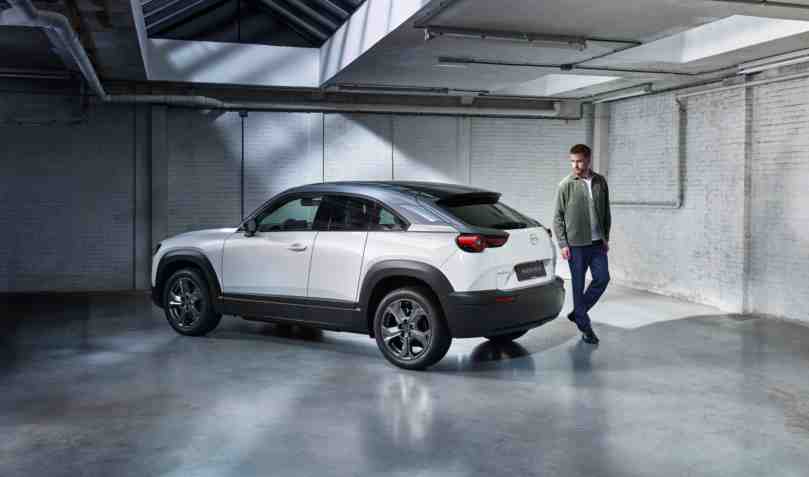Mazda’s MX-30 electric vehicle has great looks and is pitched as a second car city runaround, writes Mark Gallivan
Mazda’s first 100% electric production car is a crossover SUV, the front-wheel drive MX-30. Priced from €37,910, the MX-30 enters a niche market populated with the similarly priced Mini Electric and the Honda 3. Four trim levels are available and all versions run 35.5 kWh batteries with 145PS powering the front wheels. Expect around 40 minutes charging on a fast DC charger and up to five hours from a 22kW AC outlet.
The exterior design shows uncluttered surfaces and looks best in white — the toughest colour for any manufacturer to showcase a car’s design. The front and rear lights are high set into the bodywork like a full face motorcycle helmet. It’s a treatment reminiscent of the late 1980s Alfa Romeo SZ. The rear lights have design strands from the Aston Martin Vanquish Zagato. From a distance the rear door panel gaps disappear fooling you into believing the MX-30 is a two-door coupe.
I tested a pre-production MX-30, which has a claimed range of c.260km. In cold weather and fully laden, that figure drops to c.200km, so the car is pitched at city runaround drivers. The e-Skyactiv engine utilises a small 35.5kWh lithium-ion battery producing 271NM torque. The power output may seem modest but Mazda has kept the MX-30 relatively light at 1,409kg kerb weight.
Freestyle Doors
The MX-30 is similar to the BMW i3’s design, with reverse opening doors and a high-sided seating position. The freestyle doors offer wide access opening, as the front doors have to be opened to access the rear doors. The rear door lever is located inside the door’s cabin leading edge.
The cabin is one of Mazda’s best efforts. The main binnacle uses analogue instruments and retains a rotary controller located atop the floating central console. The MX-30 uses cork in the central console as a reference to the company’s historical cork manufacturing business. It’s a curious choice but satisfyingly tactile.
Sustainable materials include recycled plastic bottles which are used in the door panel trim. They feel like a cross between carpet and tweed, and on a short test the seats felt softly sprung but offered ample lumbar support.
With the battery located in the floorpan, the low centre of gravity helps the MX-30 feel more playful to drive than the CX-30 or Mazda 3. This electric car takes 9.7 seconds to reach 100 km/h, which is ample for general driving.
The MX-30 has an artificially sampled acceleration sound to act as a guide marker when driving in speed restricted zones. It’s not the gimmick you would first imagine and works well. As there is just the single gear, the MX-30 drives with the one-dimensional feel of any electric car, and the lack of body roll, less firm suspension and hushed progress is notable.
Mazda offers the MX-30 with three years or 100,000km manufacturer’s warranty and three years’ roadside assistance included. Taking your pure electric dip, the MX-30 will cost €294 (PCP) monthly after deposit and SEAI grant and VAT rebates over just three years. First deliveries of the MX-30 are expected in Ireland in March.








